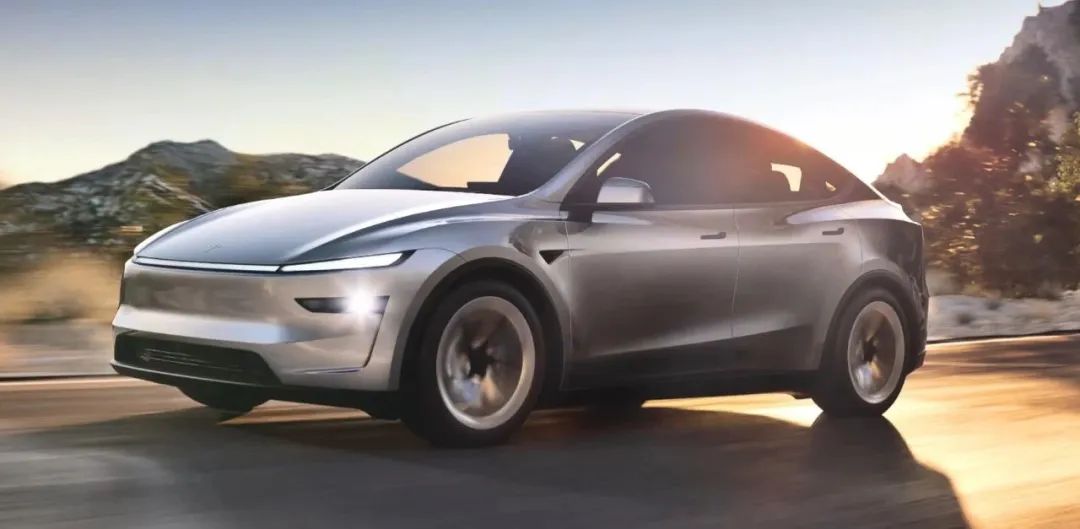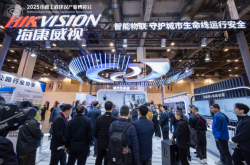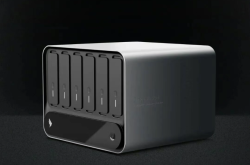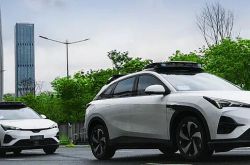Has Tesla Lost Its Shine?
![]() 06/10 2025
06/10 2025
![]() 525
525
The Halo Effect Fades
On June 5, following a public spat between Elon Musk and Donald Trump, Tesla's stock price plummeted by up to 16% on the day. By market close, the share price had dropped 14.26% from the opening, resulting in a market value erosion of over $150 billion.
Since the start of 2025, Tesla, which had been on a roll, seems to have hit a rough patch.
The anticipated technological revolution sparked by Tesla's Full Self-Driving (FSD) in 2025 failed to materialize. Even Tesla, which has dominated the electric vehicle (EV) market for over a decade, saw its growth "myth" come to an end, plunging into a whirlpool of shrinking profits, trust crises, and market losses.
On May 27, data from the European Automobile Manufacturers Association (ACEA) revealed a significant decline in Tesla's sales in the European market. In April 2025, new car registrations in Europe stood at 5,475, a year-on-year plunge of 52.6%. For the first four months of the year, new car registrations fell by 46.1% to 41,677. Meanwhile, overall EV sales in Europe increased by 26.4% year-on-year, accounting for 15.3% of the April car market share.
In the Chinese market, Tesla's retail sales in the first quarter amounted to 134,000 units, a meager 1.7% year-on-year increase. In contrast, overall sales of new energy vehicles in the domestic market soared by 47.1% year-on-year to 3.075 million units. As a pioneer in EVs, Tesla's sales growth significantly lagged behind the overall new energy market.
Furthermore, Tesla recently released its worst quarterly report in history (Q1 2025): net profit plummeted by 71%, and automotive revenue dropped by 20% year-on-year.
From February 3 to March 6, Tesla's stock price fell by over 35%, erasing over $450 billion in market value. During this time, Goldman Sachs downgraded its forecasts for Tesla's sales and deliveries from 2025 to 2027, noting a significant drop in consumer trust and willingness to purchase the Tesla brand.
Recently, Tesla CEO Elon Musk posted on social media that he had returned to working '24 hours a day, seven days a week' and sleeping in meeting rooms, servers, and factory rooms. This revelation sent Tesla's stock price surging by nearly 7%, adding $75.9 billion to its market value overnight (approximately RMB 546.1 billion).
However, as the conflict between Musk and Trump continues to escalate, Tesla once again finds itself under immense pressure.
Converging Pressures
According to officially released data, Tesla's global deliveries in the first quarter of 2025 totaled only 336,700 units, a year-on-year decrease of 13%. This figure significantly fell short of market expectations of 390,000 units and even missed the most pessimistic forecasts by investment institutions.
This delivery volume hit the lowest quarterly level since the second quarter of 2022, standing in stark contrast to the robust growth of competitors like BYD – Tesla's sales in one quarter were equivalent to just one month of BYD's sales.
Specifically, in the first quarter, Tesla's total vehicle production was 362,615 units, a decrease of 16% from the previous year. Model 3/Y production accounted for 345,454 units, down 16% year-on-year, while production of other models stood at 17,161 units, down 18% year-on-year. Total vehicle deliveries amounted to 336,681 units, down 13% year-on-year, with Model 3/Y deliveries at 323,800 units (down 12% year-on-year) and deliveries of other models at 12,881 units (down 24% year-on-year).

Image source: Tesla
According to the financial report, Tesla's revenue in the first quarter of 2025 was $19.335 billion, down 9.2% year-on-year, missing market expectations of $21.348 billion. Operating profit was $399 million, down 66% year-on-year, compared to estimates of $1.13 billion. Net profit was $409 million, down 71% year-on-year, while gross margin was 16.3%, compared to 17.4% in the same period last year and estimates of 16.1%.
Institutions have directly attributed the intertwined pressures on sales and profits to Musk himself. A UBS survey revealed that due to controversy stemming from CEO Elon Musk's excessive involvement in political affairs, Tesla's brand appeal has declined in major global markets. Some individuals even claimed that from the 'Bitcoin roller coaster' to the 'cold handling of Tesla's autonomous driving fatal accidents,' every tweet by Musk exacerbates market panic. Investor Ross Gerber was even more blunt: 'Tesla needs a full-time CEO.'
After Tesla's stock price continued to decline, Musk finally 'turned over a new leaf.' He promised to refocus his attention on Tesla and significantly reduce his time spent on the Efficiency Department.
However, some analysts believe that Tesla's two models, Model 3 and Model Y, have reached the end of their life cycles, with their product capabilities being overtaken by Chinese automakers. Especially in the Chinese market, with no new products in the past two years, the price reduction strategy may boost sales in the short term but will continue to put pressure on profit margins and earnings in the long run, with diminishing effects.
"Chinese brands can produce smarter models than Tesla's Model 3 and Model Y at a lower cost. The rise of Chinese brands has already significantly diverted purchase interest away from Tesla," said industry insiders. The shift in power in the new energy market has already begun to emerge, and the siege has ultimately taken effect.
Surrounded on All Sides
In February, Tesla began rolling out FSD in batches in the Chinese market. This 'technological pilgrimage' that Chinese fans had anticipated for five years turned into a disaster during actual testing. Issues such as hesitation in lane changes, getting lost on ramps, and 'blindness' in rainy weather occurred frequently, with netizens complaining that the $64,000 option fee was not worth it compared to Huawei's ADS lifetime package.
Chinese brands are rapidly catching up in the fields of smart cabins and assisted driving, while Tesla's FSD in China only provides a 'crippled version' due to regulatory restrictions and requires additional payment. In contrast to China's autonomous driving forces, which are forming a closed-loop ecosystem of 'data-computing power-algorithm,' the technological gap between FSD and its competitors in China is rapidly narrowing.
What Tesla should be even more concerned about is that Chinese brand electric vehicles are catching up with and even surpassing it at an astonishing speed. The assisted driving systems of brands like BYD are becoming standard features, and BYD's 5-minute fast charging system launched in March is four times faster than Tesla's Supercharger.
At that time, Morgan Stanley released research stating that BYD's newly launched 1,000kW charging system was undoubtedly an eye-catching marketing campaign aimed at reinforcing its leading position in battery and charging performance, helping to address consumer concerns about electric vehicle range and charging experience.
In contrast, when competitors are iterating products at an astonishing speed, Tesla appears sluggish and out of place. The Model Y only received its first facelift after five years, and the functional upgrades and changes in the new model were within expectations, failing to bring additional surprises to consumers.
Moreover, Tesla has expanded its product matrix extremely slowly. Taking the domestic market as an example, among the top five pure electric vehicle models in sales in the first quarter, three were small cars, and Tesla was completely absent in this price range. Even though it promised to launch the $30,000 Model Q, its R&D progress has lagged behind competitors by two years, with models like Xiaopeng's MONA M03 even dipping into the RMB 100,000 price range.
Not only in the Chinese market but Tesla also faces fierce competition from BYD in the European market. According to data from research institutions, BYD surpassed Tesla for the first time last month in the European market, becoming the leader in pure electric vehicle sales – in April, BYD sold 7,231 pure electric vehicles in Europe, a year-on-year increase of 169%; over the same period, Tesla's sales fell by 49% year-on-year to 7,165 units.
Judging from the current situation, Tesla is facing its biggest crisis since 2013, with declining sales, intensifying competition, and falling profits constituting multiple pressures. If it fails to reshape its competitive advantage in 2025-2026, its global market share may be collectively surpassed by rapidly developing Chinese brands, completely losing its shine.
This article is original content from Zhongxin Auto. Welcome to share it with friends. If media outlets wish to republish it, please indicate the author and source at the beginning of the text. Any media or self-media outlets are prohibited from using any content of this article to produce video or audio scripts. Violators will be held legally responsible.





